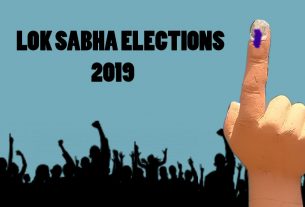A Delhi-based start-up is leading the new trend for electoral candidates to get funds directly from the public.
Niket Nishant
In an attempt to make elections more transparent, crowd-funding is emerging as a new trend among political candidates. Besides finding favour among the masses, it is also viewed by experts as a way to cleanse politics of corruption due to lobbying by corporates.
In the recent Delhi elections, Atishi Marlena from the Aam Aadmi Party (AAP) raised Rs. 28,25,100 for her campaign from 599 supporters, through the online fundraising platform–Our Democracy. Individual donations as high as Rs. 1,00,000 were made to her campaign.
“I strongly believe that a new breed of politicians needs to emerge in India…[w]ithout any political legacy, armed with just a burning desire to help our great nation achieve its full potential,” she writes about her campaign on the website. “This is where I need your help. Politicians like myself are possible only if they have clean sources of political funding.”
The platform also allowed the Deputy Chief Minister Manish Sisodia to raise Rs. 28,16,000 for his campaign from 1,313 supporters. The highest individual donation stood at Rs. 1,75,000, by a user called Rohitasava Chand. This was followed by Rs. 1,60,000 by another user, Pratima Arora Reddy. Sisodia’s target was achieved in two days.
“Your support gives me the confidence that we will be successful in our mission to make politics in India honest and based on real issues that affect common people’s lives,” he wrote in his Thank You note after successfully achieving the target.
In big states and Union Territories like Delhi, Karnataka, Maharashta, Uttar Pradesh, Bihar etc, the cap on expenditure by a candidate is set at Rs. 28,00,000 for assembly elections and Rs. 70,00,000 for parliamentary elections.
Both Marlena and Sisodia won from their respective constituencies, Kalkaji and Patparganj.
The Our Democracy platform, only such platform in India, had also helped Kanhaiya Kumar, Communist Party of India (CPI) member, raise Rs. 70,00,000 for his Parliamentary election bid in 2019. In a media interview, Bilal Zaidi, co-founder of the platform, said that crowdfunding is significant as it keeps vested interests away, which is often a by-product of receiving funds from corporates.
The donors’ accounts can also be verified. And any contribution that is not desirable by a candidate can be returned, Zaidi said in the interview.
The start-up is bootstrapped, which means it was started from nothing but the co-founders’ personal savings.
Anand Mangnale, the co-founder of the platform, while sharing a news report on AAP candidates crowdfunding their way to power, wrote on LinkedIn, “One of the most rotten things in today’s political system is Crony Capitalist money pouring into Politics, which leads to policies favouring them over people. Crowdfunding leads to Transparent and Accountable fund flow into politics…[it] makes politics accessible to people who don’t have huge pockets, it also allows people to contribute and thus hold the candidates doubly Accountable to their promises.”
Such political fundraising platforms also exist in the United States. One of them is Crowdpac, which has raised millions of dollars through 313 thousand donors. The platform is used to endorse candidates running for mayoral elections and state house elections among others. However, the platform is often accused of not being bipartisan and having a liberal bias.
In January 2018, the government had notified the electoral bond scheme. Electoral bonds are issued by the government-owned State Bank of India. It has often been criticised for not being transparent, since it allows donations to be made anonymously. The earlier upper cap (mandated by the Companies Act) of 7.5 per cent of a company’s profits for donation to political campaigns is also scrapped with the introduction of this proposal. Last year, the Supreme Court refused to withdraw the scheme but asked political parties to submit details of funds received and identity of donors.




